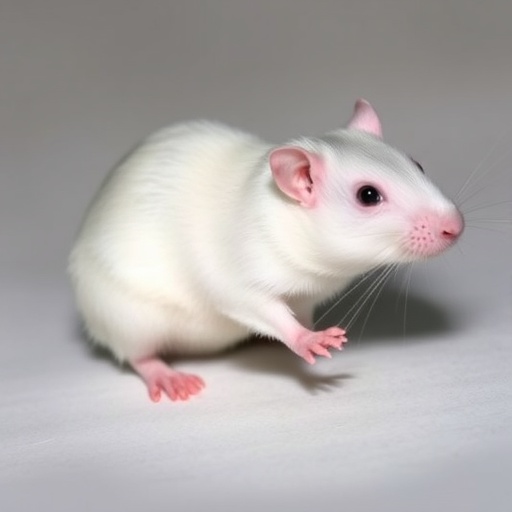In recent years, the escalating global crisis of obesity has propelled scientific efforts to develop innovative, noninvasive strategies for weight management. Traditional interventions such as gastric bypass surgery and pharmacological treatments often present significant drawbacks, from procedural risks to adverse side effects. Now, a groundbreaking approach rooted in the intersection of natural compounds and material science offers a promising alternative: edible microbeads that effectively trap dietary fats within the gastrointestinal tract, thereby reducing fat absorption without harmful consequences.
At the forefront of this research, a team led by Yue Wu at Sichuan University has engineered tiny microbeads composed of green tea polyphenols, vitamin E, and seaweed-derived polymers. These biocompatible beads harness the biochemical properties of their constituents to bind and lock fats, disrupting their usual metabolic assimilation. Unlike fat absorption inhibitors currently available—such as orlistat, which can induce liver and kidney damage while causing uncomfortable gastrointestinal symptoms—these microbeads operate within the gut in a gentler and safer fashion, offering a therapeutic strategy aligned with natural dietary habits.
The design of these microbeads capitalizes on chemical synergies. Polyphenols extracted from green tea are well-known antioxidants capable of forming multiple hydrogen bonds, which facilitate the tethering of fat molecules. Complementing this, vitamin E (alpha-tocopherol) provides lipophilic domains that enhance fat affinity. Together, they spontaneously assemble through intricate chemical interactions, creating spherical cores adept at capturing emulsified fats. To safeguard these structures against degradation in the acidic stomach environment, the researchers employ a protective shell of alginate, a natural polymer harvested from seaweed, which expands upon exposure to gastric pH shifts. This smart coating ensures the microbeads’ fat-trapping functionality is preserved until reaching the small intestine, where fat absorption predominantly occurs.
The physiological implications of this technology have been assessed comprehensively in vivo using rodent models. In a controlled study, groups of rats were fed either a standard low-fat diet or a high-fat diet constituting 60% fat content, with the latter subdivided into animals given microbeads and those without. Over a 30-day period, rats consuming the microbeads exhibited a striking 17% reduction in total body weight, alongside notable reductions in adipose tissue mass and liver damage markers. These outcomes underscore the beads’ efficacy in mitigating fat-induced metabolic stress and associated organ pathology.
Further analysis revealed that treated rats excreted elevated levels of fecal fat compared to controls, affirming the microbeads’ capacity to hinder intestinal fat absorption. Importantly, despite the increased lipid content in excreted matter, no negative health effects were observed in the animals. Comparative experiments with orlistat reinforced the advantage of the microbeads, as the pharmaceutical cohort showed typical adverse gastrointestinal symptoms absent in the microbead group, highlighting the latter’s superior biocompatibility and tolerability.
From a materials science perspective, the microbeads represent a sophisticated example of pH-responsive delivery systems. The alginate shell’s expansion triggered by acidic gastric pH exploits reversible cross-linking, facilitating controlled release and interaction timing. This ensures that fat-binding molecules are activated precisely where needed, maximizing therapeutic effects while minimizing off-target interactions elsewhere in the digestive tract.
The choice of constituents further emphasizes the potential for scalability and regulatory approval. Each component—green tea polyphenols, vitamin E, and alginate—is generally recognized as safe (GRAS) and approved for human consumption by regulatory agencies such as the U.S. Food and Drug Administration. This facilitates potential commercialization pathways and integration into functional foods and nutraceutical products without the barriers often faced by novel synthetic compounds.
Envisioning consumer applications, the research team proposes incorporating these microbeads as food additives or dietary supplements, potentially formed into tapioca or boba-like spheres that can be seamlessly blended into popular beverages and desserts. Such versatility not only enhances user compliance but also provides an enjoyable means of weight management compatible with everyday dietary patterns.
Moving beyond animal models, the researchers have initiated human clinical trials in partnership with West China Hospital of Sichuan University. This investigator-initiated trial seeks to evaluate safety, tolerability, and efficacy in human subjects, with preliminary data expected within the year. Successful clinical translation could position these polyphenol-based microbeads as a novel therapeutic modality for obesity, sidestepping the pitfalls of invasive surgery and pharmaceutical side effects.
This research underscores the broader potential of leveraging natural product chemistry and polymer science to design targeted interventions for metabolic diseases. By facilitating fat excretion via molecular capture mechanisms, this innovation may redefine approaches to obesity management, offering a scalable, safe, and patient-friendly alternative.
Moreover, the study contributes valuable insights into the interactions between dietary components and gut physiology, particularly demonstrating how physicochemical manipulation of food digestion processes can directly influence metabolic outcomes. The synergy between bioactive compounds and responsive materials paves the way for future developments in smart nutraceuticals.
The work was financially supported by several prominent Chinese scientific funding bodies, including the National Key R&D Program of China and the National Natural Science Foundation, reflecting its national importance and research excellence. Collaborations with biotechnology firms are already underway to optimize production processes to meet potential market demands.
As the global population confronts the health and economic burdens of obesity, such innovations offer a beacon of hope by delivering effective weight-loss solutions free from the harsh side effects of current treatments. Should human trials replicate the promising animal data, polyphenol-based fat-trapping microbeads could soon revolutionize dietary weight management worldwide.
Subject of Research: Obesity treatment via edible microbeads that bind dietary fats to inhibit absorption.
Article Title: Oral polyphenol-based microbeads with synergistic demulsification and fat locking for obesity treatment.
News Publication Date: August 21, 2025.
Web References:
- ACS Fall 2025 Digital Meeting: https://acs.digitellinc.com/live/35/page/1204
- YouTube Short: https://youtu.be/nVcGIev1iRk
Image Credits: Yue Wu
Keywords: Chemistry, Weight loss, Health and medicine




